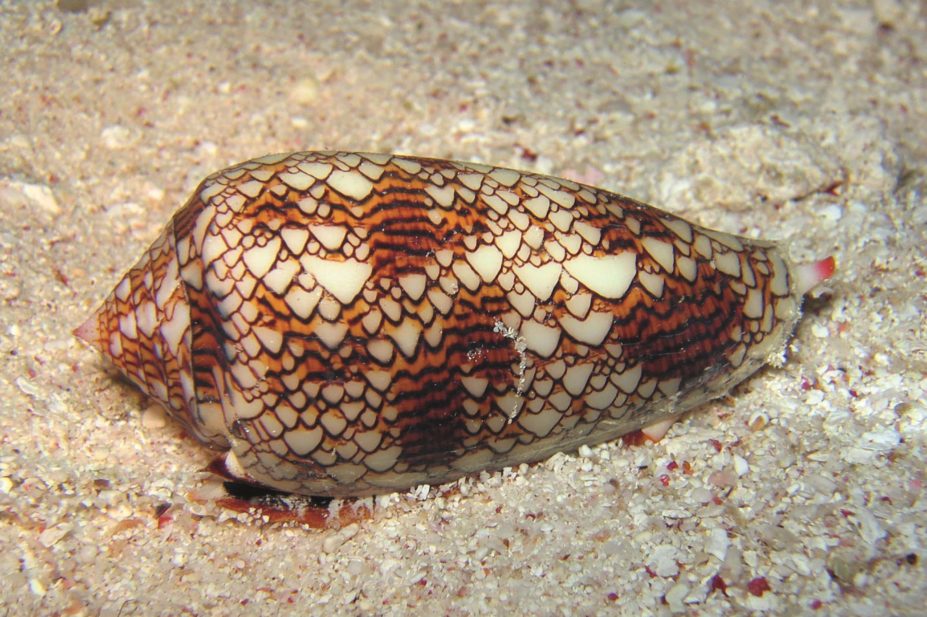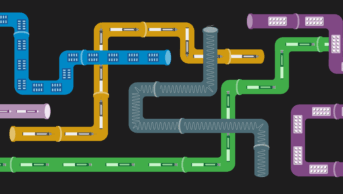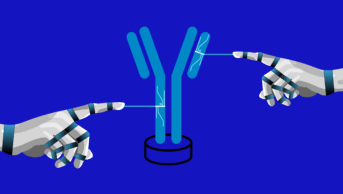
Richard Ling / Wikimedia Commons
Researchers in Australia have modified peptides from cone snails, beautiful but toxic snails found largely in the tropics, which have the potential to provide relief to patients with hard-to-treat neuropathic pain, a condition that affects around 35 million people worldwide.
Cone snails are predatory marine snails whose venom bulb and duct is home to hundreds of venomous peptides or conotoxins, delivered through the snail’s hypodermic-like radula or tooth. Across the different species, conotoxins include up to a million different peptides, mostly 12–40 amino acids long. Many of these target a range of ion channels and receptors that are of interest in pain research, including calcium, potassium and sodium channels, noradrenaline transporters and 5HT3 receptors. One of the key challenges, however, is the vulnerability of the peptides to proteolysis. A synthetic form of a conotoxin, ziconotide (SNX-111; Prialt) is already on the market but this has to be delivered using an intrathecal pump.
“Natural peptides generally need to be re-engineered,” said David Craik, University of Queensland, at BIOPROSP_15, a biannual bioprospecting conference, held in the northern Norwegian city of Tromsø in February 2015. “Cyclisation of the conotoxins should improve their stability.”
Craik’s team has created a cyclised form of α-conotoxin Vc1.1, IMB007, by adding a linker of six amino acids. This modification has increased the molecule’s activity as a GABAB agonist six-fold, while improving its stability in simulated gastric and intestinal fluid, and maintaining its biological activity in plasma. In an animal model of neuropathic pain (chronic constriction injury model in rats), IMB007 had similar effects to the analgesic and anticonvulsant gabapentin (Neurontin) but at a 100-fold lower dose.
While IMB007 is very potent in this model, its low oral bioavailability is likely to hamper its attractiveness to the pharmaceutical industry, according to Craik. Optimisation is ongoing, and the university is seeking investors or licensees to take IMB007 into clinical trials, and to further develop the technology platform.
As well as pain, conotoxin peptides could have potential in neuromuscular disorders, stroke, nicotine addiction, obesity, Alzheimer’s disease, Parkinson’s disease, depression and epilepsy.
“The peptide work performed by the Craik group is truly pioneering and represents plausible steps towards both classical and novel types of therapeutics in the future,” says Johan Svenson, a senior scientist at the SP Technical Research Institute of Sweden, who was not involved in the research. “The diverse bioactivities displayed by these natural peptides makes them a rich source of starting material in the search for new drugs against a range of disorders currently poorly managed.”
One of the major hurdles for the development of peptide-based drugs is the cost of production. Many plants, including sunflowers, naturally produce orally-stable cyclic peptides. In a bit of ‘blue sky’ thinking, Craik suggested that one route to production could be by creating edible plant-based formulations.
While there are a lot of potential hurdles for these products, such as understanding how to manage dosing levels for foods, determining how cooking methods could affect the therapeutic effects, or managing the complex regulatory challenge, Craik suggested that these potential functional foods could offer hope for people with chronic pain who need long-term treatment.
These patients are underserved by current drugs, he said, which can have a range of sedative side effects, and may only help 30–40% of patients. Plant-based production methods are also cheaper, which could improve access to drugs for low-income markets.

